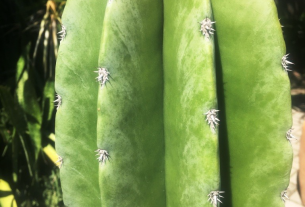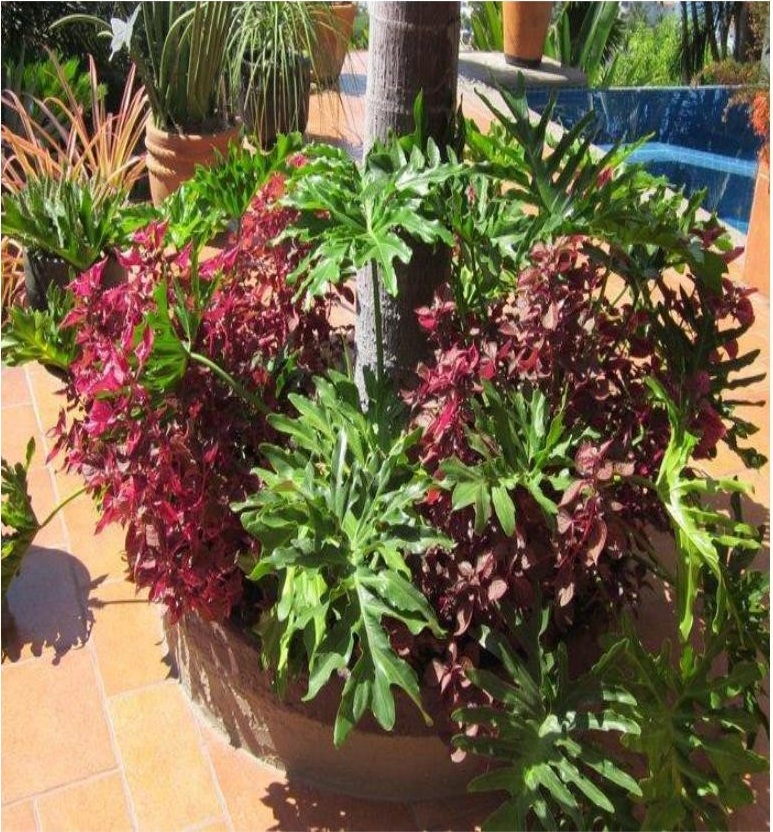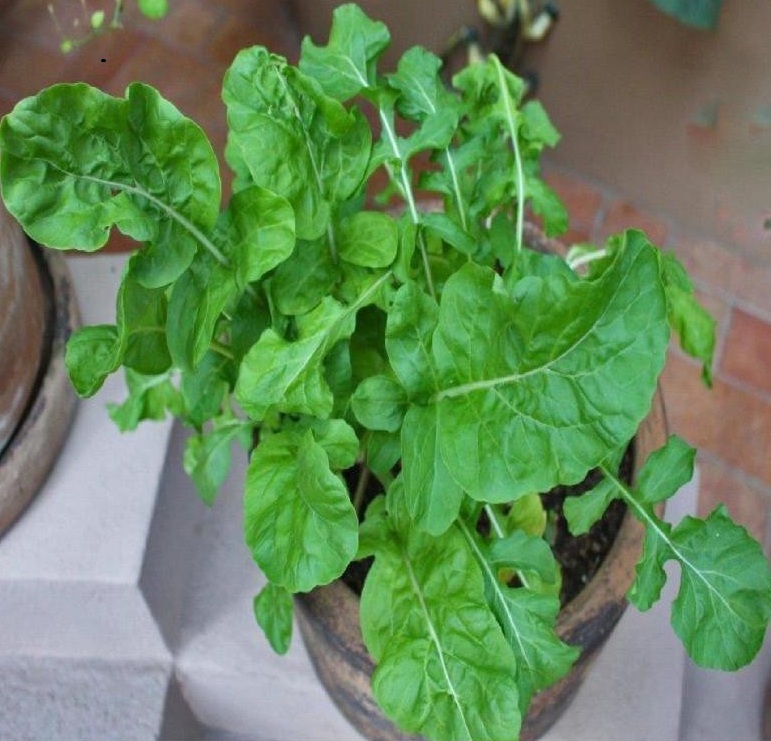By Tommy Clarkson on the November 2020 Edition
Watermelon Pepperomia Peperomia argyreia
Family Piperaceae
Also known as Baby Rubber Plant, Blunt-Leaved
Peperomia or Pepperface
 In Volume I of “The Civilized Jungle”, I wrote about the herbaceous perennial, Pepperface (Peperomia obtusifolia), which is the pure and basic, green-leafed species of the Peperomia genus. (By the by, the genus name comes from the Greek words peperi meaning pepper and homoios meaning resembling.) Experience has since shown, however, that many visitors to Ola Brisa Gardens are more intrigued by, and ask questions about, this form!
In Volume I of “The Civilized Jungle”, I wrote about the herbaceous perennial, Pepperface (Peperomia obtusifolia), which is the pure and basic, green-leafed species of the Peperomia genus. (By the by, the genus name comes from the Greek words peperi meaning pepper and homoios meaning resembling.) Experience has since shown, however, that many visitors to Ola Brisa Gardens are more intrigued by, and ask questions about, this form!
Robert Lee Riffle says that the Variegated Pepperomia Pepero-mia obtusifolia ‘Variegata’ is “the most beautiful of these cultivars (with) markings of ivory and probably the second most, if not the most, widely grown in the genus.” However, I wonder if he’s seen this species as it is, quite simply, an absolute lovely!
If a person has read the earlier-cited article then, perhaps, they will remember that the Peperomia obtusifolia “is indigenous to Mexico, the northern jungles of South America and the Carib-bean area”. Beyond this is the fact that it is a member of the same family as black pepper (Piper nigrum). Use-wise for gardeners, they are generally employed as potted specimens or in the case of certain varieties – as ground cover. Indoors, they may be enjoyed in terrariums, dish/bottle gardens, mixed planters or by a warm, sunny window. In the right conditions, they become a bit bushy and grow between six inches and a foot (15.24 – 30.48 cm).
In the May 2, 2011 issue of the online “Plowing through Life,” I noted this general, but germane and relative information. This plant “has more than 1,000 cousins in its Peperomia clan; the majority of the species are native to the tropical areas of Central and South America, but a few grow naturally in Florida. (They failed to mention those here in our adopted country, but they’re forgiven!)
Visually, Peperomias vary greatly in appearance; there are trailing, bushy and upright types with foliage that also varies greatly in colouring, variegation, texture and size (from one inch to six inches long). Leaves can be quilted or smooth, variegated or plain and succulent or thin even hairy.” While ‘Variegata’ has rather thick leaves of cream or yellow, striped with green, P. ar-gyreia what William Warren says in his book Tropical Plants for Home and Garden “has heart-shaped leaves that are striped like a watermelon, (whereas) P. caperata has quilted dark, red leaves on red stems.” P. obtusifolia ‘Minima’ is a dwarf form.
 In that they all have small and rather shallow root systems, they are subject to root rot if too heavily watered, but they still seek a bit of moistness . . . in well-draining soil. So give them a drink, sparingly, allowing the soil to dry as deep as five inches (12.7 cm) between waterings.
In that they all have small and rather shallow root systems, they are subject to root rot if too heavily watered, but they still seek a bit of moistness . . . in well-draining soil. So give them a drink, sparingly, allowing the soil to dry as deep as five inches (12.7 cm) between waterings.
As to fertilization, do so occasionally with a balanced house-plant food and following their getting a drink of water.
All are susceptible to grey mold – some call it botrytis. If the air around which your plant is growing is too stagnant, it can appear at the base of the stems. Beyond that, brown-tipped leaves may be caused by sudden drops in temperature. Hence, strive to keep these plants in well-ventilated areas. If you note such a problem, remove the affected leaves immediately. And, it should go without saying, always keep your plants away from droughts and, if indoors, cold window-sills.
 I’d like to quote, once more, from the “Plowing” piece mentioned earlier as it’s good counsel. This plant grows “well in a variety of light levels, including shade, but does best in a bright location that receives some direct sunlight. You can grow your plant in a location that offers bright, indirect light and it will do fine, but the preference is a spot where a little early morning eastern or some late afternoon western sunshine is available. Although it will tolerate it, do not place your Watermelon Pepperomia where it’s too shady; the variegation of the plant will be lost. You may have to protect the plant from the direct rays of the sun during the warmer summer months; watch your plant for signs of discontentment.”
I’d like to quote, once more, from the “Plowing” piece mentioned earlier as it’s good counsel. This plant grows “well in a variety of light levels, including shade, but does best in a bright location that receives some direct sunlight. You can grow your plant in a location that offers bright, indirect light and it will do fine, but the preference is a spot where a little early morning eastern or some late afternoon western sunshine is available. Although it will tolerate it, do not place your Watermelon Pepperomia where it’s too shady; the variegation of the plant will be lost. You may have to protect the plant from the direct rays of the sun during the warmer summer months; watch your plant for signs of discontentment.”
Finally, if your dog or cat is a vegan (first they should see an animal shrink, then go into group therapy with carnivorous cows, water allergic fish and birds with a fear of heights) this may not be a plant you wish to have, as the leaves have a degree of toxicity.
—
Tommy Clarkson is a bit of a renaissance man. He’s lived and worked in locales as disparate as the 1.2 square mile island of Kwajalein to war-torn Iraq, from aboard he and Patty’s boat berthed out of Sea Bright, NJ to Thailand, Germany, Hawaii and Viet Nam; He’s taught classes and courses on creative writing and mass communications from the elementary grades to graduate level; He’s spoken to a wide array of meetings, conferences and assemblages on topics as varied as Buddhism, strategic marketing and tropical plants; In the latter category he and Patty’s recently book, “The Civilized Jungle” – written for the lay gardener – has been heralded as “the best tropical plant book in the last ten years”; And, according to Trip Advisor, their spectacular tropical creation – Ola Brisa Gardens – is the “Number One Tour destination in Manzanillo”.



